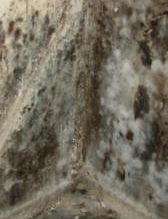 |
| Healthier workplaces are better for worker comfort, well-being and productivity. |
The term Sick Building Syndrome was coined in the 1970s, when increasingly airtight construction and potentially harmful indoor air pollution caused many employees to experience fatigue, headaches, eye, nose and throat irritation, sensitivity to odors and more.
The indoor air pollution often came from contaminants emitted by carpeting, furniture, printers, building materials and other products, personal care products, cleaning agents, and outdoor sources such as allergens, vehicle or industrial exhaust, bacteria, viruses and molds.
The problems were made worse by a lack of ventilation or malfunctioning heating systems, over-staffing and little control over the physical environment (locked windows etc.).
Widespread air quality problems in buildings
At some point in the time World Health Organization reported that up to 30 percent of new or remodeled buildings around the world had sick-building complaints.
Now a growing public awareness, initiatives like the EPA’s “Healthy Buildings Healthy People” and the green movement including LEED buildings certification, buildings are finally becoming healthier again.
LEED (Leadership in Energy & Environmental Design) certification incorporates standards for energy and water conservation, indoor environmental quality and more.
Building ventilation standards are being revised and facility managers and administrators are looking for ways to improve the indoor air quality - but of course, there is still a long way to go for many buildings.
Source: Mercury Daily News
Remove indoor air pollutants with air cleaners
Whether office buildings are healthy or not, indoor air quality can become a problem in any environment that accommodates a lot of people over an extended amount of time.
That’s why Electrocorp has designed portable air cleaners for offices that feature the most effective air filters and help provide cleaner and healthier air.
The air cleaners’ activated carbon filters remove irritating odors, chemicals, VOCs, gases and fumes, the HEPA filter takes care of particles and dust and the optional UV germicidal lamp neutralizes biological contaminants such as mold, bacteria and viruses.
Electrocorp’s air cleaners for office printers are made specifically for larger photocopy machines and printers that are common in offices. They feature the same types of air filters and a custom intake hood, intercepting harmful chemicals and particles at the printer exhaust before they can spread and affect workers.
Contact Electrocorp for more information and recommendations.
























